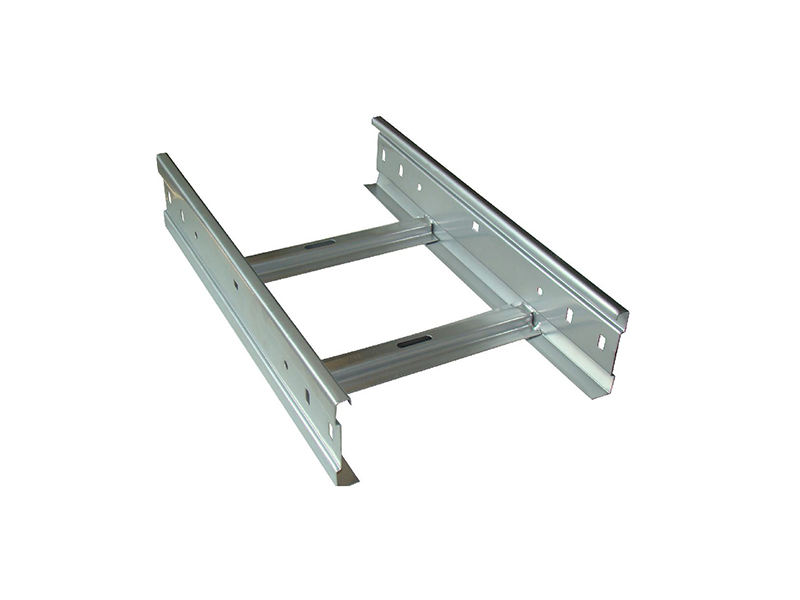济南苏鑫电缆桥架有限公司
客户咨询热线
0531-85767688
售后热线:15668327566
联系基地:山东省 德州市协同发展产业园D06幢
文章来源:https://www.sddlqj.cn/ 作者:电缆桥架厂家发布时间:2025-10-14 浏览次数:1
电缆桥架、线槽和母线槽的区别主要体现在功能定位、使用场景、安装方式、承重能力、材质及成本等方面,具体如下:
The differences between cable trays, trunking, and bus ducts are mainly reflected in functional positioning, usage scenarios, installation methods, load-bearing capacity, materials, and costs, as follows:
一、功能定位与使用场景
1、 Functional positioning and usage scenarios
电缆桥架 :专为电力工程、工业厂房等大规模电缆敷设设计,结构坚固,承重力强,适合承载几十上百根粗电缆,适用于强电系统。
Cable tray: specially designed for large-scale cable laying in power engineering, industrial plants, etc., with a sturdy structure and strong load-bearing capacity, suitable for carrying dozens or even hundreds of thick cables, and suitable for strong electrical systems.
线槽 :多用于家庭装修、办公环境,整理少量弱电线(如网线、电话线),强调美观与便捷性3。
Cable trunking: commonly used for home decoration and office environments, organizing a small amount of weak wires (such as network cables and telephone lines), emphasizing aesthetics and convenience.
母线槽 :主要用于汇集和分配电能,常见于高层建筑供电系统,动力与照明线路常分开设置,以降低事故风险。
Bus duct: mainly used for collecting and distributing electrical energy, commonly found in high-rise building power supply systems. Power and lighting lines are often separated to reduce the risk of accidents.
二、安装方式
2、 Installation method
电缆桥架 :需工程级安装,通常通过吊架、支架或螺丝固定,多用于吊顶或隐蔽工程3。
Cable tray: requires engineering level installation, usually fixed by hangers, brackets, or screws, and is commonly used for suspended ceilings or concealed projects.
线槽 :支持明装(如墙面粘贴)和暗装,安装简单快捷,适合家庭或办公场景。
Cable trunking: Supports both visible installation (such as wall pasting) and concealed installation, with simple and fast installation, suitable for home or office scenarios.
母线槽 :同样支持明装,但部分型号需安装,便于后期维护。
Bus duct: It also supports surface installation, but some models require professional installation for easy maintenance in the later stage.
三、承重能力与材质
3、 Load bearing capacity and material
电缆桥架 :承重能力强,可承载多根粗电缆,材质包括热镀锌钢板、不锈钢、铝合金等,适应复杂环境3。
Cable tray: Strong load-bearing capacity, capable of carrying multiple thick cables, made of materials such as hot-dip galvanized steel plate, stainless steel, aluminum alloy, etc., suitable for complex environments.
线槽 :承重有限,仅适合轻型线缆,常见材质为PVC或金属线槽,成本较低。
Cable trunking: Limited load-bearing capacity, only suitable for lightweight cables, commonly made of PVC or metal cable trunking, with lower cost.
母线槽 :导电介质为铝排或铜排,材质多样,但长期接触易腐蚀,需注意防潮处理。
Bus duct: The conductive medium is aluminum or copper busbar, with various materials, but it is prone to corrosion in long-term contact and requires moisture-proof treatment.
四、成本与适用场景
4、 Cost and Applicable Scenarios
电缆桥架 :因材料厚实、安装复杂,成本较高,适用于施工项目3。
Cable tray: Due to its thick material, complex installation, and high cost, it is suitable for professional construction projects.
线槽 :亲民,适合预算有限的家庭或办公环境,且便于改造。
Cable trunking: Affordable, suitable for families or office environments with limited budgets, and easy to renovate.
母线槽 :成本介于桥架与线槽之间,适合中大型项目,但需关注长期维护3。
Busbar trunking: The cost is between that of cable trays and trunking, suitable for medium and large projects, but long-term maintenance needs to be considered.
总结 :电缆桥架适合大规模电力工程,线槽侧重家庭/办公场景的简洁美观,母线槽则在电力分配中平衡性能与成本3。选择时需结合具体需求和环境条件。
Summary: Cable trays are suitable for large-scale power engineering, cable trays focus on the simplicity and aesthetics of home/office scenarios, and bus trays balance performance and cost in power distribution. When making a choice, it is necessary to consider specific needs and environmental conditions.
本文由 济南电缆桥架 友情奉献.更多有关的知识请点击 http://www.sddlqj.cn/ 真诚的态度.为您提供为的服务.更多有关的知识我们将会陆续向大家奉献.敬请期待.
This article is a friendly contribution from Jinan Cable Bridge For more related knowledge, please click http://www.sddlqj.cn/ Sincere attitude To provide you with comprehensive services We will gradually contribute more relevant knowledge to everyone Coming soon.
 山东电缆桥架和电缆槽盒的区别
山东电缆桥架和电缆槽盒的区别
电缆槽盒和电缆桥架有以下区别: There are the following differences between cable tray boxes and cable trays: 1.
TIME:2025-11-23